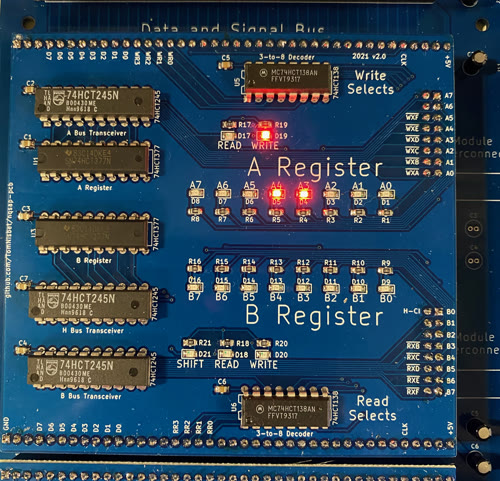A/B and Shift Registers
The A and B registers are 8-bit registers that provide the inputs to the ALU. The A register acts as an accumulator and general-purpose register that is accessible from instructions available to the user.
The B register is only used as an operand register for the ALU operations. It is not accessible as a general-purpose register and there are no instructions to directly read or write its contents. The microcode may also use this register as temporarly storage for non-ALU instructions.
The sHift register (register H), is a read-only register that returns the contents of the B register shifted one position to the right. The LSB of B shifts into the Carry flag. The MSB of H is populated by the carry flag for the ROR (rotate right) instruction and is hard-coded to zero for the LSR (logical shift right) instruction. Note that H is not an actual register. It is simply a alternate way of reading the value of the B register.
The logic that controls the Carry Flag input, whether from the ALU or the B register, is on the ALU Module. The Carry Flag input for the H register is produced by the Flags Module.
The A and B registers are each implemented using a 74HCT377 register and a 74HCT245 8-bit bus transceiver. The H register is implemented using a second 74HCT245 wired to the B register outputs, but offset by one bit. The B7 bit is the H6 bit, B6 is H5 and so on.
The A/B Register module also has a pair of 74HCT138 3-to-8 decoders for read and write register decoding. These selects are used for the A/B/H registers on board and remaining selects are presented on the module interconnect headers for use by the ALU and Flags modules.

